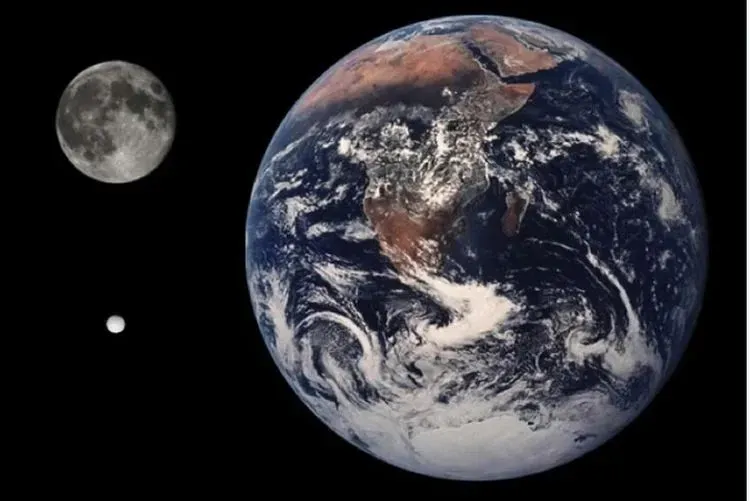Pictures taken by the automatic apparatus “Cassini”, cruising in the vicinity of Saturn, and subsequent studies led to the conclusion that under the ice of Enceladus, a satellite of the giant planet, an ocean is hidden. Water from it beats with powerful fountains directly into space.
The jets were first noticed in 2005, and in 2015 it was possible to take a sample from them. This was done by Cassini, which flew only a few tens of kilometers from the gushing surface.
For a long time it was not clear what these bursts were. NASA specialists were the first to clarify. The collected data testified: jets of water. And salty. They are not formed when ice turns into steam. Their source is liquid water.
 |
| From the subglacial ocean of Enceladus, jets of water shoot through cracks in the ice. |
Subsequently, it was found that this water contains molecular hydrogen – about one percent, carbon dioxide, methane and ammonia. And these “impurities” indicate that hydrothermal springs work at the bottom of the ocean of Enceladus and create conditions suitable for the life of certain organisms – at least bacteria and maybe shellfish.
Suspicions that Enceladus may be habitable have recently been reinforced by specialists from the Massachusetts Institute of Technology (Massachusetts Institute of Technology). As reported in the journal Science Advances.
Additional analysis and computer simulations showed that areas of more salty water are at the poles of Enceladus – under a thicker layer of ice. At the equator, the ice is thinner and the water less salty.
On average, the saturation of water in the ocean of the satellite with salt reaches about 30 grams per liter. This should be conducive to life and the appearance of some inhabitants. For comparison, the salinity of the earth’s – inhabited – oceans is 35 grams of salt per liter.
 |
| Earth, Moon and Enceladus |
The probable existence of geothermal sources at the bottom of the Enceladus ocean was also indicated by the data collected by Cassini. Under the ice of the satellite there are powerful sources of heat. As if there are 20 thermal power plants with a total capacity of 15.8 ± 3.1 gigawatts (1 gigawatt = 1000 megawatts).
“We assumed that the level of heat flow from the bowels of Enceladus is about 1.1 gigawatts, maximum – 5.8, but it turned out to be much higher,” said Carly Howett, research leader from the Southwest Research Institute (Southwest Research Institute in Boulder).
Scientists still cannot explain what drives heat sources so powerfully.
Of course, the interior of Enceladus is heated by gravitational interaction with Saturn – the tidal force. A little – adds radiation. But the performance of both is not enough to generate heat as powerfully as it is observed.
